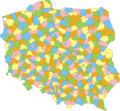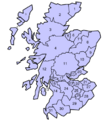County facts for kids
A county is a special name for a part of a country. It's like a region or an area. The meaning of "county" can be a bit different depending on the country.
Long ago, the word "county" came from the land ruled by a "count" (a type of noble, like an earl in Great Britain). Today, a county is often a local government area. It's usually bigger than a town or district but smaller than a whole state or province.
County governments help run things in their area. They keep important records, organize elections, and make sure laws are followed. They are a type of local government that helps people in their daily lives.
Contents
- Counties in Canada
- Counties in China
- Counties in Croatia
- Counties in France
- Counties in Hungary
- Counties in Ireland
- Counties in Japan
- Counties in New Zealand
- Counties in Norway
- Counties in Poland
- Counties in Romania
- Counties in Serbia
- Counties in Sweden
- Counties in the United Kingdom
- Counties in the United States
- Images for kids
- See also
Counties in Canada
Canada has ten provinces. Five of these provinces use counties. In Ontario, Nova Scotia, and New Brunswick, counties are local government areas. This means they have their own local councils that make decisions.
However, in Quebec and Prince Edward Island, counties are now just names for geographical areas. They don't have their own governments anymore.
Counties in China
In China, the English word "county" is used for the Chinese word xiàn (县 or 縣). On Mainland China, counties are the third level of local government. This means they are an important part of how the country is organized.
On Taiwan, a county is the highest level of government below the main central government.
There are about 2,000 counties in China. This number has stayed about the same for 2,000 years, since the Han dynasty! This makes the county one of the oldest types of government areas in China.
The person in charge of a county in China is called a magistrate.
Counties in Croatia
Counties became important local government areas in Croatia in 1990. Croatia has twenty counties. The city of Zagreb also has the same status as a county.
These counties are called županije in Croatian. Their leader is known as a župan.
Counties in France
The old historical counties of France changed in 1790. This happened after the French Revolution. The new government areas were called départements.
However, French people still use the word "county" (comté) when talking about the Free County region. This region used to be called the old Free County of Burgundy.
Counties in Hungary
In Hungary, the government areas are called megye. In Latin, this word is comitatus, which is similar to "county".
Today, Hungary has 19 counties. It also has 20 city counties and one capital city, Budapest, which has its own special status. The comitatus was also the main area in the old Kingdom of Hungary.
Counties in Ireland
Long ago, in the 1800s, Ireland had 32 counties. Later, 26 of these counties became the Republic of Ireland. The other 6 counties became Northern Ireland.
These counties were part of four bigger areas called provinces:
In the 1970s in Northern Ireland and the 1990s in the Republic of Ireland, some county borders changed. For example, Dublin County in the Republic was split into four parts: Dublin City, Dún Laoghaire - Rathdown, Fingal, and South Dublin.
Even though the official borders changed, people often still talk about the original 32 counties for sports and culture. Each county usually has its own flag or colors and often a nickname too!
Counties in Japan
In Japan, the word "county" is sometimes used for gun (郡). A gun is a part of a prefecture. Other names for gun include "rural district" or "rural area".
Today, these "counties" in Japan don't have any political power or government organization. They are mainly used for things like postal services.
Counties in New Zealand
After New Zealand stopped using provinces in 1876, they started a county system. This system was used until 1989.
In the second half of the 20th century, many people moved from cities to nearby country counties. Because of this, some counties and cities joined together to form a "district" (like Rotorua). Some counties also changed their name to "district" (like Waimairi) or "city" (like Manukau).
In 1974, New Zealand made a big change to its local government. Now, the country has cities and districts, but no counties.
Counties in Norway
Norway has 19 counties. The Norwegian word for county is fylke (singular) or fylker (plural). Until 1972, Bergen was its own county. Now, it's a municipality within the county of Hordaland.
Every county in Norway has smaller areas called municipalities (kommune or kommuner). Each county also has an assembly called a fylkesting. People in Norway choose the members of this assembly every four years. Counties are in charge of things like high schools and roads.
Some people and political groups want to get rid of counties. Others want to make them into larger regions.
Counties in Poland
In English, the second-level government area in Poland is called a powiat. We usually translate this as "county" or "district".
Counties in Romania
The smaller areas in Romania are called judeţ (plural: judeţe). This name comes from jude, which was a judge of a city.
Today, Romania has 40 counties. Its capital city, Bucharest, has a special status separate from the counties.
Counties in Serbia
The areas in Serbia are called okrug. Sometimes we call them counties, but more often they are called districts.
Counties in Sweden
In 1634, the old provinces in Sweden were given a new name: counties. Today, Sweden has 21 counties. Inside each county, there are smaller areas called Municipalities.
The Swedish name for a county is Län.
Counties in the United Kingdom
See also List of counties of the United Kingdom
The United Kingdom has 92 traditional counties. There are 86 in Great Britain and 6 in Northern Ireland. These British counties were created at different times in history.
In England, during Anglo-Saxon times, areas called Shires were used to collect taxes. These shires usually had a main town at their center, called the shire town. The shire often had the same name as its shire town (for example, Bedfordshire). Later, these main towns were called county towns. The word "county" came from the Normans, from a Norman word for an area ruled by a Count (a type of lord).
Wales got thirteen counties in 1539. The counties in Scotland are even older than that.
The borders of counties in England are different today than they used to be. In medieval times, some important cities like London, Bristol, and Coventry were given the status of counties themselves. Some small places, like Islandshire, were also counties. In 1844, many of these small places became part of their old counties again.
Counties in the United States
The name "county" is used in 48 of the 50 states in the United States. It's the next government area smaller than the state. In Louisiana, these areas are called parishes, and in Alaska, they are called boroughs.
The U.S. Census Bureau lists 3,141 counties or similar areas. The power of county governments can be very different from state to state.
In New England, counties are mostly used for law enforcement. In Connecticut, Massachusetts, and Rhode Island, counties don't have a government role. They are just geographic names. Most local power in New England is held by the New England town.
In other parts of the U.S., counties are responsible for things like the police, water, gas, electricity, libraries, and birth certificates. County sheriffs are the head of the police in some states, especially for areas outside of cities and towns. Other places have "County Police," and sheriffs focus more on law enforcement duties.
Each county has a county seat. This is usually the biggest town, where the main county offices are located. In Western states, like California, the county is the main unit of local government.
Images for kids
See also
 In Spanish: Condado para niños
In Spanish: Condado para niños







